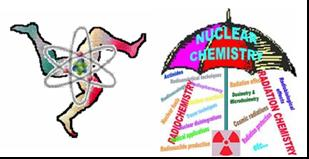Speaker
Ms
Camila Elias
(University of São Paulo / Center of Nuclear Energy in Agriculture / Radioisotopes Laboratory)
Description
Commercial dog food is supposed to be a complete and balanced diet, formulated by mixing several ingredients, aiming at being the exclusive source of all nutrients for a healthy life of dogs. However, for reducing costs, low quality ingredients are often used in the composition of dog food, including byproducts from meat and grain processing and byproducts from other food industries, as well as mineral substances. Low quality ingredients can introduce residues of pesticides, mycotoxins and other toxic substances, like uranium, causing health problems to the animals. The overexposure to uranium may cause pathological alterations in the kidneys. In this context, the objective of this work was to further investigate the presence of uranium in dry dog foods of various brands commercialized in Brazil. Thirty-four samples, including food for puppies and adults, were acquired in the local market of Piracicaba. The dog food samples were ground in titanium knife mill, homogenized and evaluated by instrumental neutron activation analysis (INAA). The results were expressed in dry mass basis. The U concentration ranged from <0.46 to 3.99 mg/kg, with the three highest values for the same brand (2.07 mg/kg, 3.15 mg/kg and 3.99 mg/kg). Furthermore, there were correlation between U and Sc (R=0.968) and U and La (R=0.617). Such correlations indicated that the high values of uranium originate from mineral ingredients or from contamination with geological material, since Sc and La are rare earth elements used as tracers of geological material. Uranium is naturally present at high levels in some phosphate rocks, which are the main economically viable source of phosphorus, widely used for the production of fertilizers, and for animal nutrition.
Primary author
Ms
Camila Elias
(University of São Paulo / Center of Nuclear Energy in Agriculture / Radioisotopes Laboratory)
Co-authors
Prof.
Elisabete A. De Nadai Fernandes
(University of São Paulo / Center of Nuclear Energy in Agriculture / Radioisotopes Laboratory)
Dr
Márcio Arruda Bacchi
(University of São Paulo / Center of Nuclear Energy in Agriculture / Radioisotopes Laboratory)




